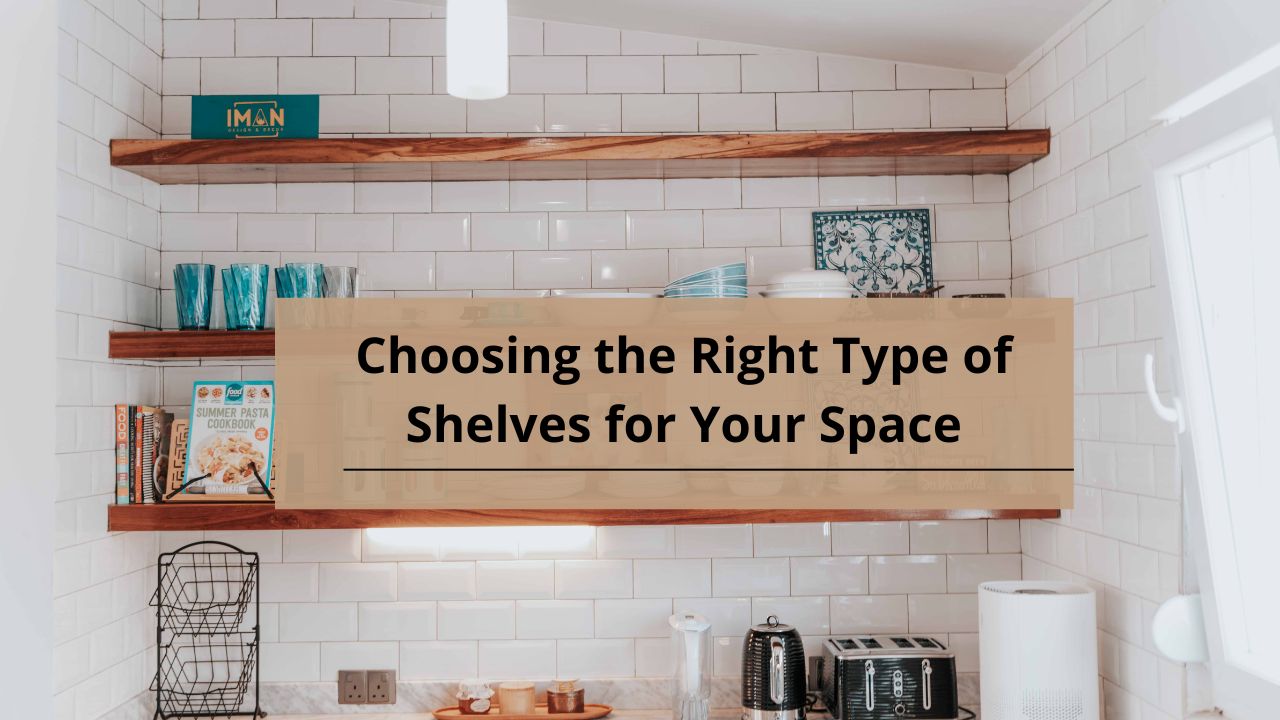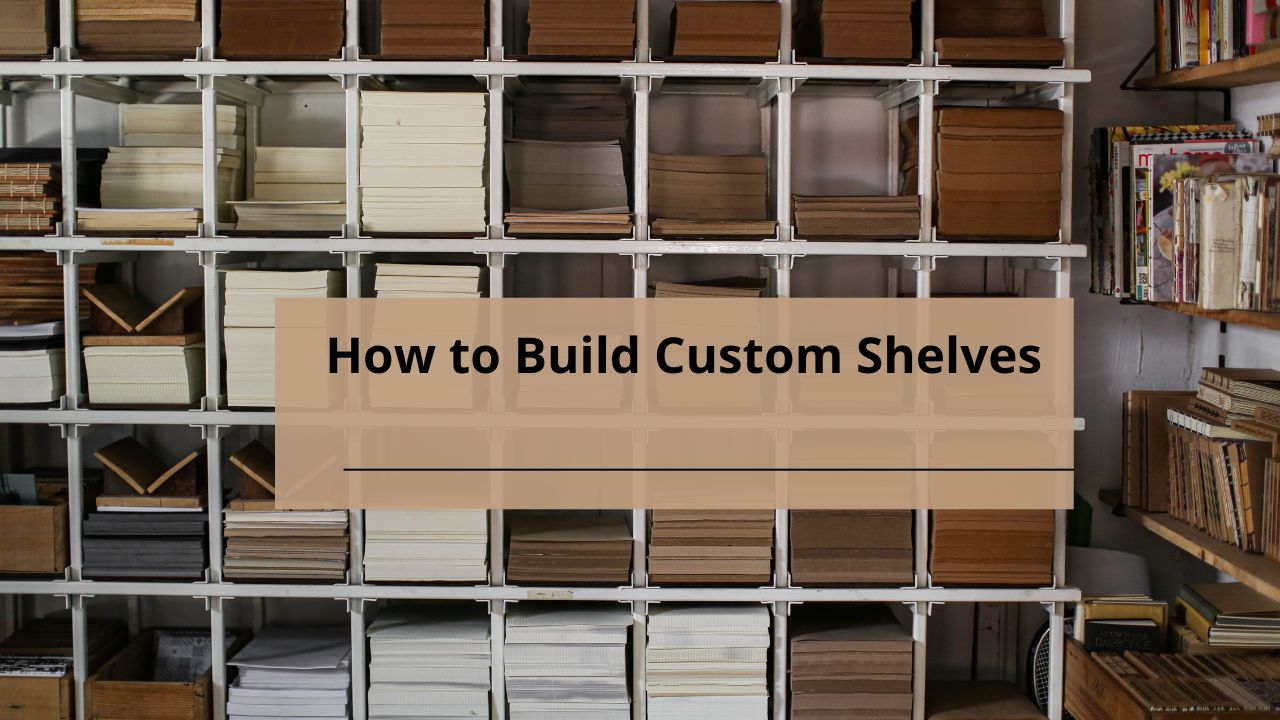Shelves are not just practical storage solutions but also key elements in the design of your space. The right type of shelving can enhance the functionality, aesthetic appeal, and organization of a room. With a wide variety of shelving options available, it’s important to choose the right type to match your needs and style. In this guide, we’ll explore different types of shelves and provide tips on selecting and installing them to fit your space perfectly.
Types of Shelves
Floating Shelves
Floating shelves are mounted directly on the wall without visible brackets.
- Characteristics and Best Uses: These shelves offer a sleek, modern look and are ideal for showcasing decorative items or small collections. They work well in living rooms, bedrooms, and bathrooms where you want a clean, unobtrusive storage solution.
Wall-Mounted Shelves
Wall-mounted shelves are attached to the wall with visible brackets or supports.
- Benefits and Applications: They provide sturdy support and come in various styles and sizes. Perfect for kitchens, offices, and garages, these shelves offer versatility and can hold heavier items like books and kitchenware.
Freestanding Shelves
Freestanding shelves are not attached to the wall and stand independently.
- Advantages and Ideal Settings: These shelves are portable and flexible, making them suitable for living rooms, home offices, and libraries. They come in various styles, from bookcases to display units, and can be moved as needed.
Built-In Shelves
Built-in shelves are custom-designed to fit the space and are often integrated into the room’s architecture.
- Customization and Long-Term Benefits: They offer a seamless, tailored look and maximize space efficiency. Built-ins are ideal for creating storage solutions in areas with specific dimensions or architectural features, such as alcoves or recesses.
Corner Shelves
Corner shelves fit snugly into the corners of rooms, utilizing otherwise wasted space.
- Utilization and Space Efficiency: These shelves are excellent for small or awkward spaces. They provide additional storage or display areas without taking up much room, making them ideal for bathrooms, kitchens, and small living areas.
Factors to Consider When Choosing Shelves
Space and Dimensions
Measure your space carefully before choosing shelves to ensure a proper fit.
- Measuring Your Space: Consider the height, width, and depth of the area where the shelves will be installed. Accurate measurements will help you select shelves that fit well and complement the room’s proportions.
Purpose and Functionality
Think about what you need the shelves to do.
- What Will the Shelves Be Used For?: Whether you need storage for books, display space for art, or a place for kitchenware, the intended use will influence the type and size of shelves you choose.
Style and Aesthetics
Shelves should match the overall decor of your space.
- Matching Shelves to Your Decor: Choose shelves that complement your existing furniture and design elements. Consider materials, colors, and finishes that blend with your room’s style.
Material and Durability
The material of the shelves affects their appearance and strength.
- Choosing the Right Material for Your Needs: Common materials include wood, metal, glass, and plastic. Wood offers a classic look, metal provides a modern touch, and glass adds elegance. Consider the durability and maintenance of each material based on your usage.
Weight Capacity
Ensure the shelves can support the items you plan to place on them.
- Ensuring Shelves Can Hold the Load: Check the weight capacity of the shelves and the mounting hardware. For heavy items, opt for sturdy materials and secure installation methods.
How to Install Shelves
Tools and Materials
Gather the necessary tools and materials before starting your installation.
- Essential Tools for Installation: Common tools include a drill, level, screwdriver, measuring tape, and wall anchors. Ensure you have everything needed to make the installation process smooth and efficient.
Installation Tips
Follow these steps for a successful installation.
- Step-by-Step Installation Guide:
- Measure and Mark: Determine the placement of the shelves and mark the wall.
- Drill Holes: Drill holes for the brackets or mounting hardware.
- Install Brackets: Secure the brackets or supports to the wall.
- Attach Shelves: Place the shelves on the brackets and ensure they are level and secure.
Creative Uses for Shelves
Decorative Displays
Use shelves to showcase your favorite items and add personality to your space.
- Showcasing Art and Accessories: Arrange artwork, decorative objects, and personal mementos to create visual interest and enhance your room’s decor.
Storage Solutions
Shelves can help organize and declutter your space.
- Organizing Books, Kitchenware, and More: Use shelves to store books, kitchen supplies, or office essentials, keeping your space tidy and functional.
Functional Additions
Incorporate shelves into functional areas for added convenience.
- Incorporating Shelves into Functional Spaces: Add shelves to entryways for keys and mail, or in bathrooms for toiletries and towels.
Maintenance and Care
Cleaning and Upkeep
Regular maintenance keeps your shelves looking their best.
- Keeping Your Shelves in Top Shape: Dust shelves regularly and clean with appropriate products based on the material. For wooden shelves, use a wood cleaner, and for glass shelves, use a glass cleaner.
Repair and Adjustments
Address any issues promptly to maintain the shelves’ functionality.
- Fixing Common Issues: Repair loose brackets or screws, and adjust shelves if they become uneven. Regular checks will ensure long-term stability and performance.
Conclusion
Choosing the right type of shelves for your space involves considering various factors, including functionality, style, and installation. By understanding different types of shelves and their uses, you can select options that enhance both the utility and aesthetics of your room. Whether you need floating shelves for a modern look or built-ins for a custom solution, the right choice will contribute to a well-organized and visually appealing space.
FAQs
1. What type of shelves are best for small spaces?
Floating or corner shelves are ideal for small spaces as they utilize wall space efficiently without taking up floor area.
2. How do I choose the right material for my shelves?
Consider the intended use and the room’s decor. Wood is classic and sturdy, metal is modern and durable, glass is elegant, and plastic is lightweight and affordable.
3. Can I install floating shelves myself?
Yes, with the right tools and careful measurement, floating shelves can be installed by DIY enthusiasts. Follow installation guides or tutorials for best results.
4. What are some creative ways to use shelves?
Use shelves for decorative displays, additional storage, or functional additions like organizing entryway items or bathroom supplies.
5. How do I ensure my shelves can support heavy items?
Check the weight capacity of both the shelves and the mounting hardware. For heavier items, choose sturdy materials and ensure proper installation


